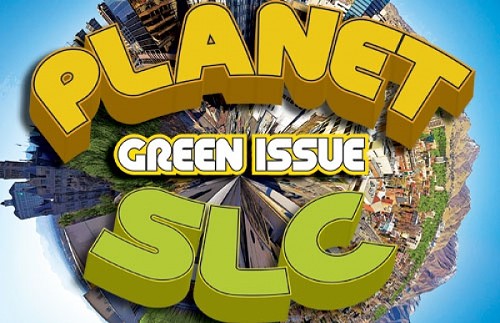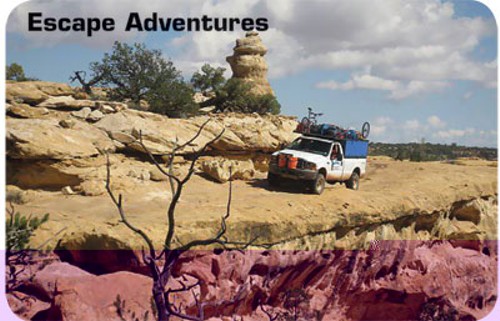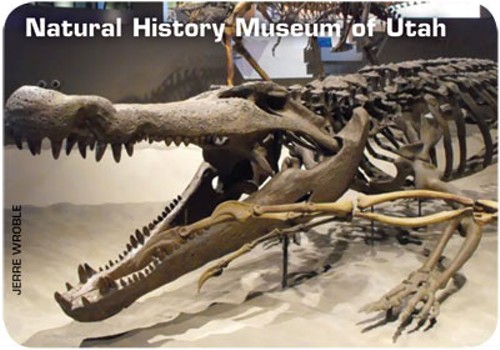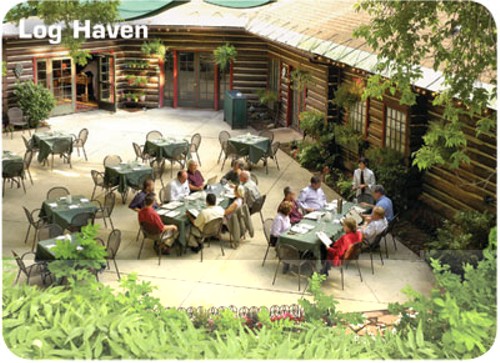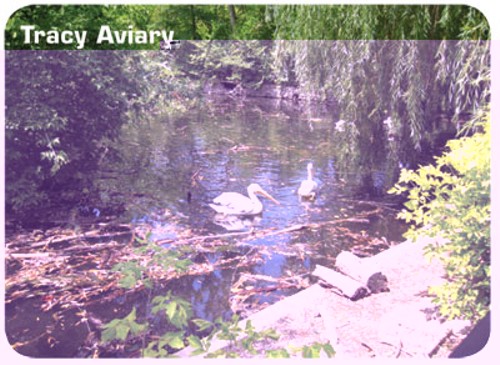The word “green” used to conjure up memories of St. Patrick’s Day or of Kermit the Frog; today, green is much more of a movement, an ideology and even a marketing ploy. Often paired with an “eco-” prefixed word, green is commonly used to convince consumers that the product, service, business or person they support is as concerned about the environment as they are, regardless of the true motives.
Without a government agency to regulate the use of “green,” how are average Utahns supposed to make informed buying decisions about the best environmental companies to patronize? Never fear, eco-reader! Here are 13 local businesses, products and people that walk their being-green talk, even if it causes them some hardship.
Green Grocer
Cali’s Natural Foods
Chef Ian Brandt’s desire to provide fresh, local and organic vegetarian food has spawned three restaurants—Sage’s Cafe, Vertical Diner and Cafe SuperNatural—and one of the best local markets around, Cali’s Natural Foods. The emphasis on “gourmet-conscious cuisine” relies on taste and source instead of price, with produce (some of which comes from Brandt’s own garden) often cheaper than the farmers market. You can also purchase the restaurants’ signature foods and sauces, as well as delight the vegetarian in your life during the holidays with pre-packaged Thanksgiving meals. 389 W. 1700 South, Salt Lake City, 801-483-2254, CalisNaturalFoods.com
Green Nonprofit Partnership
Wasatch Community Gardens’ City Roots Program
In addition to its normal gardening, workshop and resource duties, Wasatch Community Gardens is growing a generation savvy in sustainable food. Through partnerships with 16 city organizations and a cadre of devoted volunteers, WCG provides local children, many of whom are low-income, with weekly gardening classes through its free City Roots program. The program’s unique objectives provide 4- to 18-year-olds a valuable hands-on organic-gardening education from seed to harvest, as well as knowledge of healthy foods, most of which they take home or are donated to local food pantries. WasatchGardens.org/youth-programs/city-roots
Green Tour & Travel Company
Escape Adventures
With 26 Utah tours in locales such as Canyonlands, Arches, Moab, Bryce, Zion and Escalante, Escape Adventures claims to be the world’s first carbon-neutral outfitter, providing tours, equipment and retreats for almost any outdoor destination imaginable in the western United States. The Las Vegas-based business is dependent on the wilderness and, as such, the company is committed to preservation and conservation, using recycled and organic products, solar power and vegetable-oil fuel. It works to minimize waste and help sustain indigenous communities through direct activities and philanthropy. Most of its tour activities are biking- and hiking-based, so you can enjoy the environment while preserving it at the same time. EscapeAdventures.com
Green-Built Environment
Natural History Museum of Utah
The Natural History Museum of Utah’s new 163,000-square-foot, $103 million building was designed to fit within the landscape instead of over it, an expression of the organization’s dedication to preserving the area’s local natural history. New York City’s Ennead Architects and local firm GSBS Architects designed the building and surrounding grounds to meet the standards of the U.S. Green Building Council’s Leadership in Energy and Environmental Design (LEED) Gold Certification, which they are applying for. From two 10,000-gallon cisterns that collect rainwater, to the parking lot’s “pervious” pavement to the rooftop’s solar panels, the museum is the very definition of environmental design. The building uses the Bonneville Shoreline Trail as the museum’s “main street,” and the copper that makes up its exterior came from Utah’s Bingham Canyon Mine, courtesy of Rio Tinto, for which the NHMU building is named. NHMU.Utah.edu/museum/our-new-home
Green Water Protection
Salt Lake City and County Mayors
Ralph Becker & Peter Corroon
The Wasatch Range Recreation Access Enhancement Act, introduced to the U.S. House of Representatives by Rep. Rob Bishop, R-Utah, in late 2011, would legalize the sale to private developers of 30 acres of national forest land between Canyons and Solitude ski resorts upon which to build a gondola. Concerned about impacts to Salt Lake Valley’s canyon watershed, Salt Lake City Mayor Ralph Becker traveled to Washington, D.C., to speak against the measure and joined with Salt Lake County Mayor Peter Corroon to say that the SkiLink plan “violates our current policies … and would damage our prized environment and balance of public uses and users.” Even though it’s easier to go along with Utah’s D.C. representatives, neither mayor’s position wavered in making the Wasatch Mountains watershed priority A-1.
Green Waste & Resources
Montage Deer Valley
The five-star Montage Deer Valley spans over 1 million square feet, with 174 guest rooms and 81 private homes across 16 acres. A luxury-resort property situated at 8,600 feet in Deer Valley’s Empire Canyon had better take its environmental impact seriously. Luckily, Montage did from the get-go. Since opening in December 2010, the property became the first LEED-certified hotel in Utah, minimizing waste, preserving open space and using renewable energy. Montage even brought in a director of sustainability to usher in its sustainable design and operating principles. Montage is keen on waste and resource management, using regional and recycled materials, as well as energy- and water-efficient equipment and fixtures. In addition to green policies for housekeeping, landscaping and purchasing, Montage was able to divert 83 percent of construction waste from landfills. 9100 Marsac Ave., 801- 604-1300, Park City MontageDeerValley.com
Green Energy Efficiency
Mountain Vista Homes
Self-titled “Utah’s Green Builder,” Mountain Vista Homes has a reason to brag. When it comes to both new and used homes, the company was honored in Utah Business Magazine’s 2010 Utah Green Business Awards in the Green Building category. Mountain Vista makes the most energy-efficient conventional homes in Utah, using both energy-efficient building materials and energy-saving building techniques. UtahsGreenBuilder.com
Green Renewable Energy
Utah Solar Energy Association
A nonprofit focused on education, public outreach and policy development, Utah Solar Energy Association helps businesses and individuals move toward more sustainable energy sources. The association hosts yearly programs, such as the Renewable Energy Conference, that focus on research and innovations in the renewable-energy market, as well as hands-on demos of products. The Solar Tour helps educate and inform the public about renewable-energy options, from solar panels on your roof to wallet-size solar cell-phone chargers that work anywhere—sustainable technology even teenagers could endorse. UtSolar.org
Green “It’s a Start”
Carbon Reduction
Salt Lake City’s Idle-free Ordinance
Anyone who’s inhaled Salt Lake’s chunky air during a winter inversion can no longer sit “idly” by. When warm air traps cold air and pollution on the valley floor, as is often the case in December and January, the lungs of city residents have no choice but to suck it in. Salt Lake City leaders decided that drivers who live or do business in the city should take personal responsibility for their collective exhaust. In late 2011, city fathers enacted an idle-free ordinance that prohibits unnecessary—over two minutes—vehicle idling within city limits. Just shut ‘er down and breathe deep. IdleFree.utah.gov
Green Restaurant
Log Haven
Once a rustic sanctuary for well-heeled outdoorsmen, Log Haven, nestled in Millcreek Canyon, is a canyon restaurant proud of its green “cred”: It purifies onsite spring water, recycles its fryer oil to be used as biodiesel, uses natural and LED lighting, hosts an annual “Meet the Makers” celebration of locally produced food, and changes its menu with the seasons to utilize locally grown food. Showcasing wildflowers, a waterfall, wildlife and a beautiful canyon road meandering through the Wasatch National Forest, a meal at Log Haven has the added benefit of reconnecting diners with nature, making them “greener” by association. 6451 E. Millcreek Canyon Road, Salt Lake City, 801-272-8255, Log-Haven.com
Green Zoological Facility
Tracy Aviary
In addition to its shows, habitats and hundreds of birds, Tracy Aviary is one of the best places to get an environmental education in Utah. You can learn about the Species Survival Plan, an international effort to preserve endangered species through breeding programs; recycle your old cell phones and inkjet cartridges; watch red wiggler worms turn food waste into nutritious compost; and learn what to do if you ever find an injured bird in the wild. The aviary makes it seem easy to be both educational and fun, especially with its many made-for-kids programs. 589 East 1300 South, Salt Lake City, 801-596-8500, Salt Lake CityTracyAviary.org
Green Nonprofit
Utah Society for Environmental Education
Want to know what makes for a successful field trip? Green gift-wrapping? How to teach the water cycle? If you care about how environmental principles are taught in schools and in the public arena, and if you value environmental “literacy,” then you should support the nonprofit Utah Society for Environmental Education. Since 1981, the USEE has helped create an open, honest forum for the advancement of environmental education in Utah. USEE’s website says that its conferences, lunches and workshops are dedicated to teaching Utahns “how to think—not what to think—about the environment.” USEE.org
Green Political Prisoner
Tim DeChristopher
In December 2008, University of Utah student Tim DeChristopher derailed a flawed oil- and gas-lease auction by placing fake bids on 14 parcels, several of which were next to Arches and Canyonlands national parks. For disrupting the auction, DeChristopher was convicted in March 2010 of two felonies, and in July 2011 was sentenced to two years in prison and ordered to pay a $10,000 fine by Judge Dee Benson. The government views DeChristopher as a financial criminal; his supporters see a courageous soul willing to use nonviolent civil disobedience to protest federal energy policy, corporate power and their joint role in climate change. His jail sentence has actually been a catalyst to his cause; the nonprofit he co-founded continues to train this generation of protesters engaged in nonviolent direct action. PeacefulUprising.org
Jessica Baker is a research biologist who works for the University of Utah.
More by Jessica Baker
-
The Biased Biologist: Turkey Turmoil
- Nov 22, 2011
-
The Biased Biologist: Giving the Gift of Eco-Style
- Nov 21, 2011
-
The Biased Biologist: Planet of 7 Billion
- Nov 3, 2011
- More »


